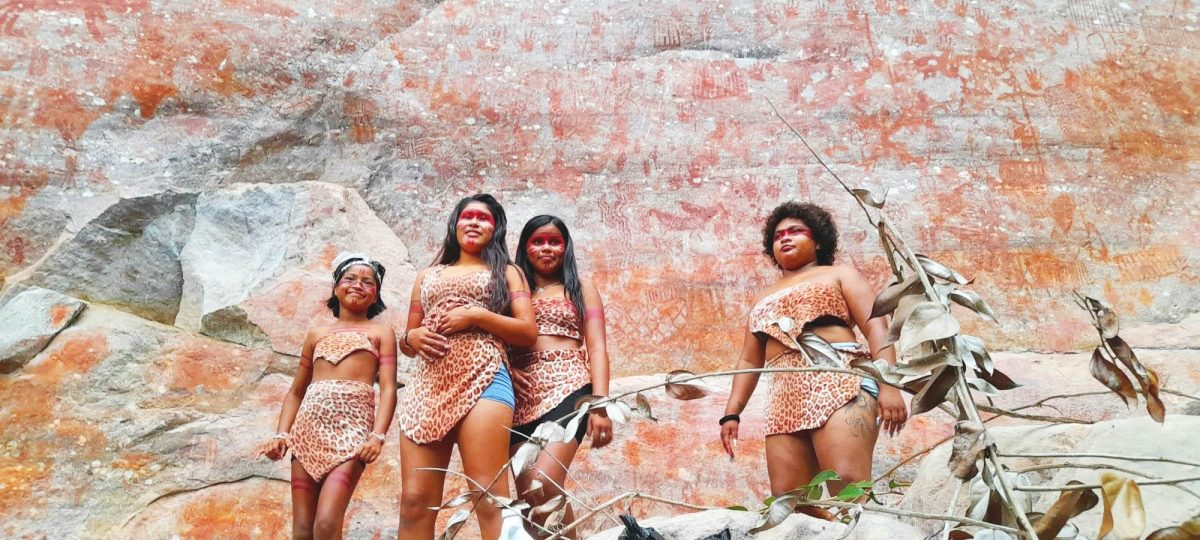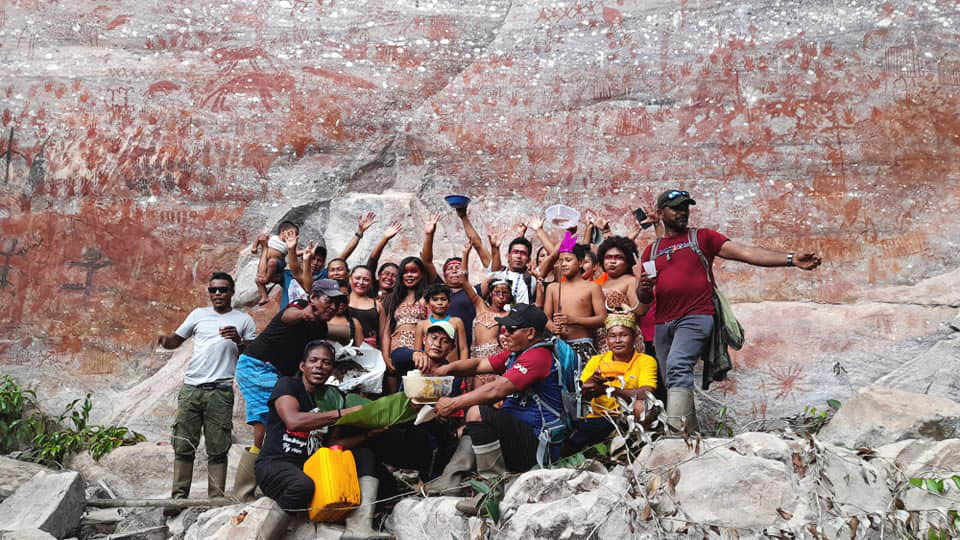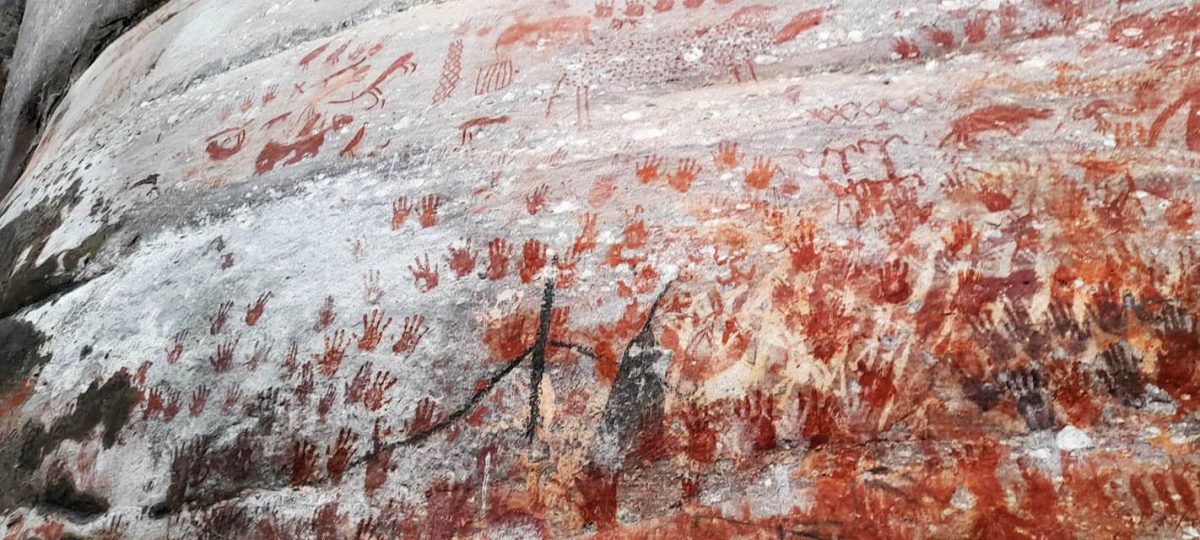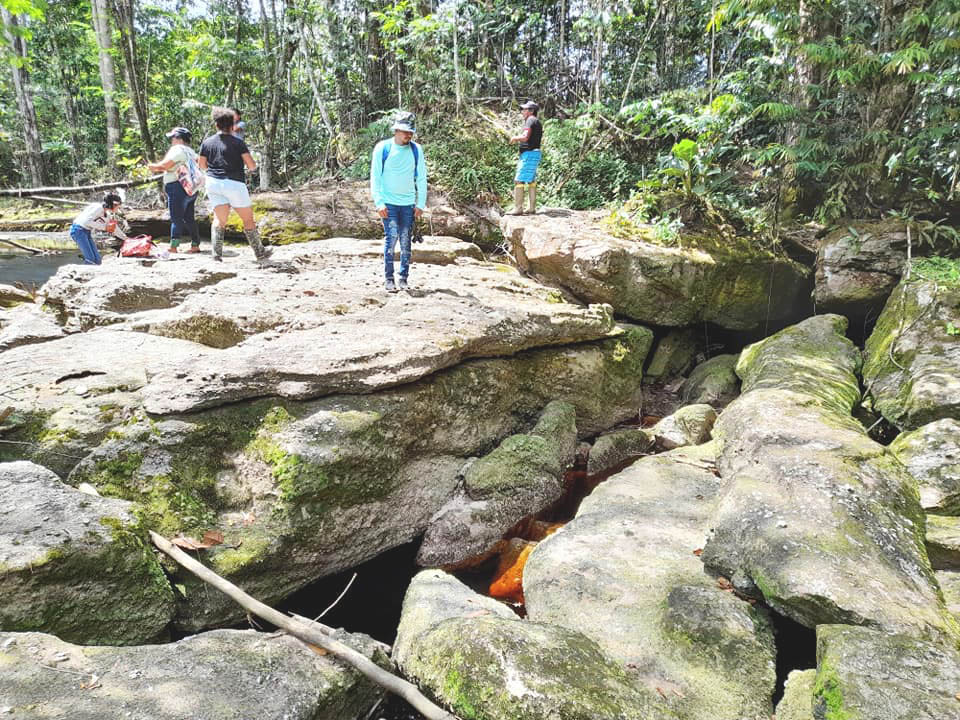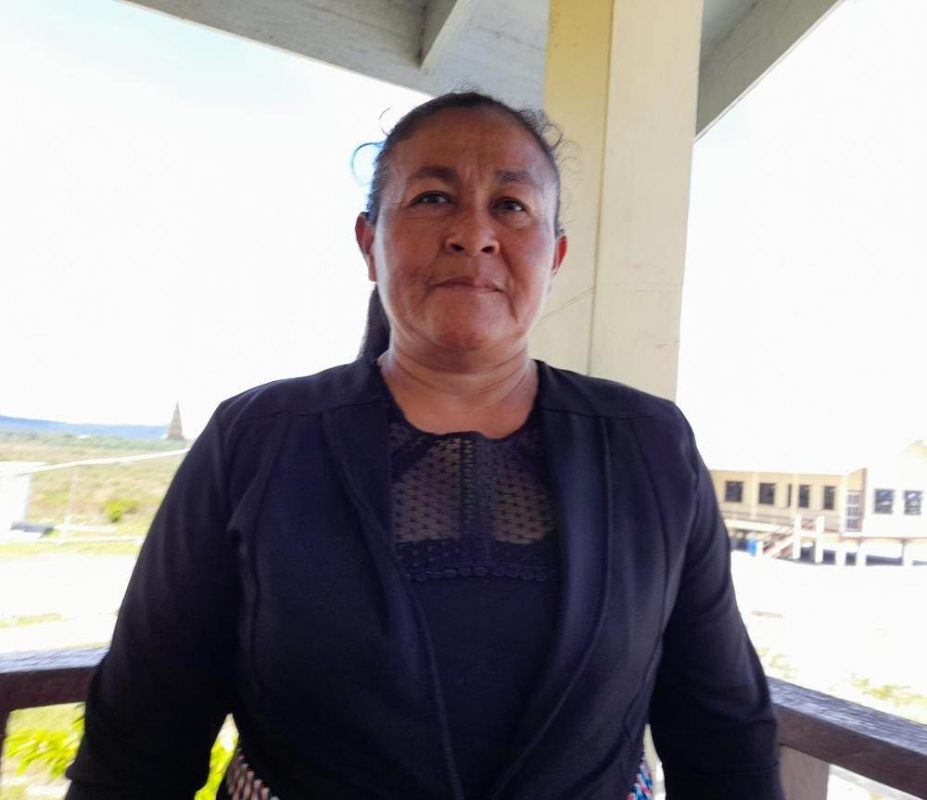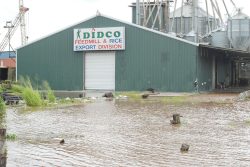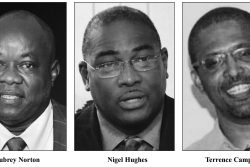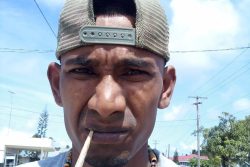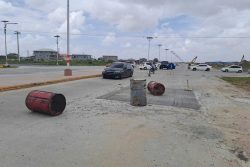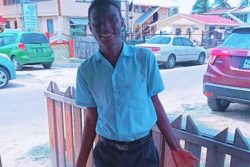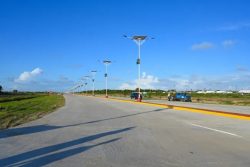As part of the celebration of Indigenous Heritage Month, a group of Akawaio people, including children, of Imbaimadai in Region 7 (Cuyuni-Mazaruni) spent the day on September 17 sharing folklore, soaking up nature and visiting petroglyphs and the Maipuri Waterfall.
Teacher of Imbaimadai Primary School Wanira Cornelius was among the nine village councillors who planned the trip about three months ago. She said it was the first of its kind, while noting that there had been school tours and sports activities but never anything like this.
Cornelius shared that for many of the people on the trip, it was their first time seeing the boulders with the petroglyphs, which are situated approximately three hours away by boat and on foot. Their journey to the rocks, Cornelius said, began with a ten-minute boat ride on the Mazaruni River then along the Kurikeng River. They then walked for an hour before taking another boat to the other side then climbed the mountain where the boulders are. The climb, she said, was somewhat dangerous as there were creases that opened up to caves below. Nonetheless, they arrived safely with the children leading the way.
The teacher pointed out that getting to the rocks could have taken less time, but with children and elders among their group, they could not go too quickly. Added to this, they also stopped to explore and enjoy a cool dip at the picturesque Maipuri Falls.
The 49-year-old woman said she recalled her grandfather speaking about the rocks when she was a little girl. “According to what I heard growing up, they have been there for thousands of years,” she said.
To make the trip more celebratory, a number of villagers wore their traditional clothing and painted their faces in red designs.
There are no people inhabiting the area where the petroglyphs are, except for miners who work there. Some of the miners also tagged along to the rocks.
Cornelius added that the creek that flows near the mountain is called Cawai Baru, which in Akawaio means tobacco creek, and got its name from the tobacco plants growing at the top of the mountain.
Along the way they spotted a wild cat which Cornelius said had black and white spots. Among the stories told on their trip was one about a rock that makes the sound of a bird. The teacher chuckled as she relayed the story shared by a man from the village. The man, she said, shared that according to the legend, anyone who hears the rock making the strange noise is destined to die within a matter of days. She said she hopes she never hears that sound.
The people in her village, she said, do not know much about the petroglyphs and she hopes that people who specialize in this field can visit someday to share their knowledge. “We didn’t have anyone who could properly explain about the paintings on the rocks. We understood that is how people communicated long ago so that is what we explained to the little ones. Those paintings were used as communication. We saw a lot of pictures which told us about so many things… some were the hands of children. The paintings were very high. Some were low enough but some were high above us, about 15 to 20 feet high. It’s just on the walls of the rocks. Maybe they had to make ladders to reach the top to paint but my grandfather once told me it was never high for them; maybe they were taller than us. It could also be erosion, because you could see some of the rocks start eroding which I think is because of rain,” shared the teacher.
Cornelius said that while it has not yet been confirmed, she and the other village councillors have talked about educational/social trips becoming something for villagers to look forward to, and not an occasion to be enjoyed only during the month of September, but at least four times a year.
In the future, they hope to make access to the boulders easier for the elderly and children by making steps leading to them. This would also make the petroglyphs more accessible to locals and visitors and therefore boost tourism in this part of the region.
“We have to meet as a council again and with the people of the village [so when] we open this area to tourism, we can get started working on it now,” said Cornelius.
The area also has a number of waterfalls, but the Maipuri Falls is one of the main attractions and as such she hopes to bring more attention to the falls. “We have many more attractive sites but you have to walk hours before you can get to them,” added the village councillor.
Twenty-three of the 27 persons who made the trip are said to be from Imbaimadai. Asked how the gas for the boat among other things was facilitated, the village councillor pointed out that the villagers contributed to making their journey a successful one.
“I feel we should teach a lot more about nature and about history. Our young people… they don’t know about much of our history. We also have a lot of bush we can use as medicine which our
children don’t really know about, so we need to educate them more on these things,”she added.
Many of the youths who turn to mining for their livelihood lack the skill to make tibisiri crafts, use the matapee or make cassareep. Few, she said, are farming or know how to make cassava bread or farine. She said the village council is looking to train young people in various skills. However, one positive thing she could say about the young people as it pertained to preserving their culture was that almost all of them speak Akawaio.
“We’re happy to have a lot of those sacred sites. We’re proud of our culture but our young people have a lot to learn,” said Cornelius.
Mining activities in the area, she said, have driven off many wild animals and polluted the surrounding water killing the fish, which made up a large part of their diet. She said the villagers have complained to the Guyana Geology and Mines Commission as well as the government about mining in the area and how much it is affecting their livelihood but nothing has been done to date. There are mines about as little as half a mile outside of the village.
The population of the village is approximately 470, and the teacher hopes that more residents will be interested in making the trips. At the time Cornelius spoke with Stabroek Weekend, villagers were making preparations to host their Heritage Day celebrations.
Surprisingly, Imbaimadai has not had any confirmed cases of COVID-19 to date. Since the pandemic, she said, villagers were instructed to remain at Imbaimadai and the majority of them heeded this. She added that those travelling took precautionary measures such as wearing their face masks, sanitizing and avoiding large crowds. The teacher said that for the past month, they have restricted visitors to the village unless they can provide a negative PCR test. Most of the residents are yet to take the COVID vaccine. Cornelius, however, has received both doses of the Astra-Zeneca vaccine.
